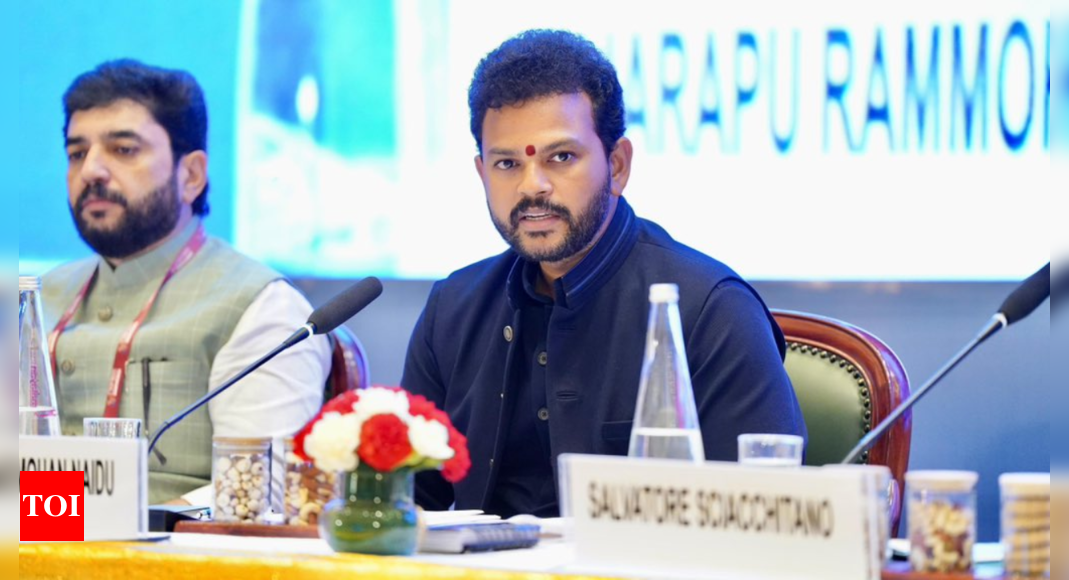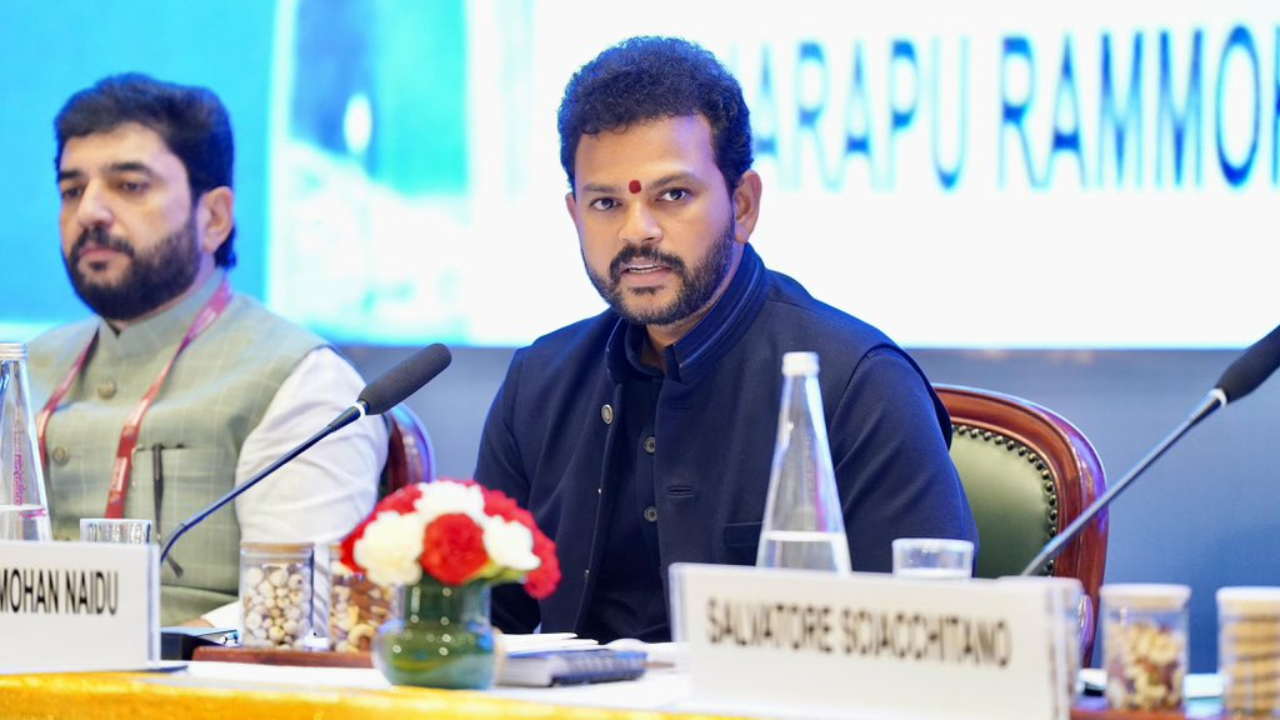Email :16
MUMBAI: India will be expanding its regional air connectivity, civil aviation minister, Kinjarapu Rammohan Naidu said in a recent public address adding that the country could have 350 to 400 airports in the coming 20 to 25 years.
The minister, who was speaking at FICCI’s India Regional Air Mobility Conference 2024, spoke about the government’s intention to extend the Regional Connectivity Scheme UDAN (Ude Desh ka Aam Nagrik) for another ten years beyond its current end date in 2027.”Our vision is to extend the RCS UDAN scheme for a further ten years,” Naidu said. “We are already preparing a new programme to make it even more impressive, not only for the civil aviation sector but keeping in mind the common man of this country and making air travel more affordable for them.”
The UDAN scheme, launched in 2016, has enhanced regional air connectivity in India. Naidu highlighted its success, stating, “By operationalizing over 583 routes, we are connecting 86 airports, many of which were previously underserved or unserved. More than 1.4 crore passengers have benefited from UDAN flights, with over 2.80 lakh flights operated under the scheme and a viability gap funding support of more than 3,700 crores.”
The minister also outlined several other key initiatives and developments in India’s aviation sector. India is actively pursuing the development and manufacturing of its own regional aircraft. “We want to produce our own aircraft. We are learning from the best and want to have our presence in the regional aircraft market,” Naidu stated.
Looking beyond national borders, minister Naidu outlined a vision for greater interconnectivity between Asia Pacific countries. “It is time that we look beyond the international borders and prepare a roadmap for greater interconnectivity between the Asia Pacific countries,” he stated.
The minister proposed a hub and spoke model to connect more airports in the region, with major airports serving as hubs and smaller regional airports as spokes. This approach aims to create a seamless network that reduces travel times and optimises resources. Naidu highlighted the region’s potential, noting that it is expected to become the world’s largest aviation market by 2035, with 3.5 billion passengers annually. He called for collaboration to address common challenges such as market imbalances, infrastructure gaps, and regulatory hurdles.
Speaking about the Electric Vertical Takeoff and Landing (eVTOL), the guidelines for which were released by DGCA recently, the minister underlined that the development positions India at the forefront of emerging aviation technologies. Naidu emphasised the potential of eVTOL vehicles to revolutionise urban air mobility, particularly in congested metropolitan areas like Delhi and Mumbai. “If not for longer regional routes, at least within the city, I think these can provide us with a very strong aviation mobility, air mobility network,” he explained.
Vumlunmang Vualnam, secretary, union ministry of civil aviation, further elaborated on India’s aviation growth trajectory. Vualnam highlighted the sector’s robust growth, citing a 10% annual increase over two decades, rising to 11% excluding the Covid years. The Secretary emphasised the government’s proactive steps, including doubling the number of airports and implementing schemes like UDAN.
Alexis VIDAL, chief commercial officer, ATR Regional Aircraft, provided insights into the success of regional connectivity in India. VIDAL highlighted ATR’s significant contribution to city pairing, a crucial aspect of regional air mobility. “In the past five years, our aircraft have contributed to creating more than 200 new city pairs across India,” VIDAL stated. He emphasised that this number surpasses the routes opened by all other jet aircraft combined. ATR’s success in India is attributed to its aircraft’s ability to operate on thin routes with moderate demand and unrivalled economics. VIDAL also revealed future potential, citing research identifying opportunities for an additional 300 new city pairs, potentially adding 80 million annual passengers in regional air transportation.
Remi Maillard, chairman – FICCI Civil Aviation Committee and president & MD, Airbus – South Asia & India, emphasised the importance of regional air mobility for India’s aviation growth. He highlighted India’s ideal market conditions for regional connectivity, citing its geography, demographics, and economic growth. He noted UDAN’s success in connecting underserved airports and fostering new business models, while acknowledging challenges such as infrastructure limitations and the need for continued government support to ensure viability.
The minister, who was speaking at FICCI’s India Regional Air Mobility Conference 2024, spoke about the government’s intention to extend the Regional Connectivity Scheme UDAN (Ude Desh ka Aam Nagrik) for another ten years beyond its current end date in 2027.”Our vision is to extend the RCS UDAN scheme for a further ten years,” Naidu said. “We are already preparing a new programme to make it even more impressive, not only for the civil aviation sector but keeping in mind the common man of this country and making air travel more affordable for them.”
The UDAN scheme, launched in 2016, has enhanced regional air connectivity in India. Naidu highlighted its success, stating, “By operationalizing over 583 routes, we are connecting 86 airports, many of which were previously underserved or unserved. More than 1.4 crore passengers have benefited from UDAN flights, with over 2.80 lakh flights operated under the scheme and a viability gap funding support of more than 3,700 crores.”
The minister also outlined several other key initiatives and developments in India’s aviation sector. India is actively pursuing the development and manufacturing of its own regional aircraft. “We want to produce our own aircraft. We are learning from the best and want to have our presence in the regional aircraft market,” Naidu stated.
Looking beyond national borders, minister Naidu outlined a vision for greater interconnectivity between Asia Pacific countries. “It is time that we look beyond the international borders and prepare a roadmap for greater interconnectivity between the Asia Pacific countries,” he stated.
The minister proposed a hub and spoke model to connect more airports in the region, with major airports serving as hubs and smaller regional airports as spokes. This approach aims to create a seamless network that reduces travel times and optimises resources. Naidu highlighted the region’s potential, noting that it is expected to become the world’s largest aviation market by 2035, with 3.5 billion passengers annually. He called for collaboration to address common challenges such as market imbalances, infrastructure gaps, and regulatory hurdles.
Speaking about the Electric Vertical Takeoff and Landing (eVTOL), the guidelines for which were released by DGCA recently, the minister underlined that the development positions India at the forefront of emerging aviation technologies. Naidu emphasised the potential of eVTOL vehicles to revolutionise urban air mobility, particularly in congested metropolitan areas like Delhi and Mumbai. “If not for longer regional routes, at least within the city, I think these can provide us with a very strong aviation mobility, air mobility network,” he explained.
Vumlunmang Vualnam, secretary, union ministry of civil aviation, further elaborated on India’s aviation growth trajectory. Vualnam highlighted the sector’s robust growth, citing a 10% annual increase over two decades, rising to 11% excluding the Covid years. The Secretary emphasised the government’s proactive steps, including doubling the number of airports and implementing schemes like UDAN.
Alexis VIDAL, chief commercial officer, ATR Regional Aircraft, provided insights into the success of regional connectivity in India. VIDAL highlighted ATR’s significant contribution to city pairing, a crucial aspect of regional air mobility. “In the past five years, our aircraft have contributed to creating more than 200 new city pairs across India,” VIDAL stated. He emphasised that this number surpasses the routes opened by all other jet aircraft combined. ATR’s success in India is attributed to its aircraft’s ability to operate on thin routes with moderate demand and unrivalled economics. VIDAL also revealed future potential, citing research identifying opportunities for an additional 300 new city pairs, potentially adding 80 million annual passengers in regional air transportation.
Remi Maillard, chairman – FICCI Civil Aviation Committee and president & MD, Airbus – South Asia & India, emphasised the importance of regional air mobility for India’s aviation growth. He highlighted India’s ideal market conditions for regional connectivity, citing its geography, demographics, and economic growth. He noted UDAN’s success in connecting underserved airports and fostering new business models, while acknowledging challenges such as infrastructure limitations and the need for continued government support to ensure viability.


